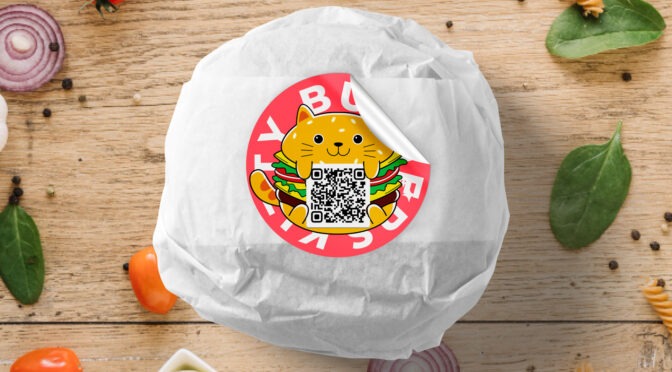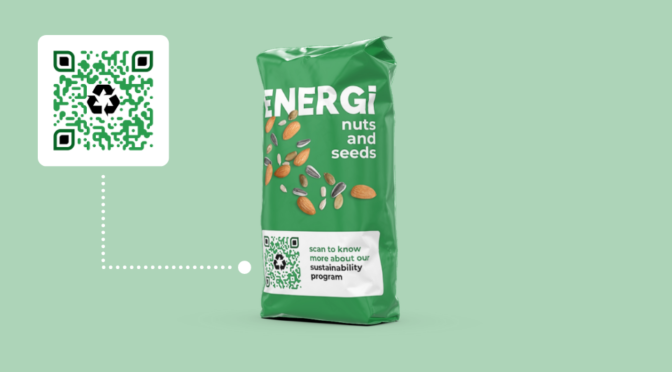Customer support and success teams in most companies spend countless hours answering the same routine questions. Pretty soon, there is a flood of questions waiting for these teams, resulting in:
- Long wait times, leading to higher abandonment rates and customers seeking solutions elsewhere
- Burnt-out agents, resulting in poor service quality and high agent turnover
- Customers losing patience before they get help, leading to unresolved issues and negative brand perception
Most of these questions stem from a simple problem: customers can’t easily access the information they need at the moment they need it most.
Companies are solving this with product QR Codes, providing customers with what they need to and preventing the host of negative reviews that often accompany hard-to-reach customer support teams. Businesses have used Uniqode QR Codes not only to guide customers through step-by-step installation videos and reduce unnecessary calls, but also to adjust support hours based on when customers actually scan for help (more on this later!).
Let’s explore the most common support bottlenecks and how QR Codes can help remove them.
Table of contents
- Real reasons customer support teams get overloaded
- Product QR Codes are your customer support partner
- What different industries can solve with a straightforward scan
- Best practices for using QR Codes to streamline support
- Turn support calls to customer success stories with product QR Codes
Real reasons customer support teams get overloaded
Most tickets that customer support teams encounter aren’t complex technical failures. They’re simple setup questions or missing information frustrations that snowball into a very avoidable workload.
Here are the common triggers that overwhelm support teams and slow down customer experience:
1. Too many repetitive “how-to” queries
The issue:
Support inboxes overflow with the same setup and usage questions, over and over:
- “How do I pair this with my phone?”
- “Why isn’t the light blinking?”
- “Where do I find the manual?”
- “What does this error message mean?”
While these issues seem small, they pile up fast. Picture a wearable tech brand receiving 200 emails a day, all asking how to connect the device to Bluetooth, even though the information is already in the printed guide.
The impact:
Companies face productivity drain. Agents spend most of their day repeating instructions that could’ve been resolved in two clicks, and ticket queues swell, leading to longer customer wait times. Support teams rarely have the opportunity to focus on genuine product issues that require critical attention, such as diagnosing Bluetooth firmware bugs in the same wearable device that may be affecting thousands of users globally.
2. Customers misplace manuals when they actually need them
The issue:
Once a product is unboxed, paper manuals often disappear, either tossed out with the packaging, stuffed into drawers, or simply forgotten. Weeks or months later, when a quick reset or troubleshooting step is needed, the instructions are nowhere to be found. Imagine trying to restart a dishwasher mid-cycle but having no clue where the reset button is; you know the answer exists, you just can’t get to it.
The impact:
A small hiccup can turn into a full support ticket simply because the instructions are no longer accessible. Agents waste hours emailing PDFs or explaining steps over the phone, while customers feel frustrated by a product experience that suddenly depends entirely on a help desk.
3. Support isn’t available in the moment of need
The issue:
Product issues don’t wait for business hours or opportune moments for customers. Washing machines can break down mid-cycle on a Sunday, and a smart light won’t pair right before guests arrive. What’s on deck are chatbots with answers to only common questions while live agents have clocked out.
The impact:
Customers are left with no answers, and frustration skyrockets, leading to a hit in brand loyalty. Monday mornings can be chaotic for support teams as they catch up on angry messages. In categories like consumer electronics, a few hours of delay can turn excitement into regret.
4. Documentation fails global users
The issue:
Brands ship products across borders, cultures, and languages, but not instructions. Imagine a Spanish speaker receiving a smart door lock with only English setup steps. A five-minute install suddenly becomes a guessing game that risks security and product damage.
The impact:
Misunderstandings often lead to product misuse, resulting in more support calls. Customers may also feel excluded, as if the company didn’t consider their needs, which can significantly damage brand trust.
5. Support lacks context and data to improve
The issue:
When customers reach out, they rarely provide the information support actually needs. For example, which model, when it was purchased, and what they’ve already tried to fix. Sometimes, an email stating “It’s not working” triggers multiple back-and-forth exchanges just to understand the issue.
Meanwhile, because support teams don’t have a complete picture of what issues are happening most often, and to which products or batches, they can’t spot patterns or flag bigger problems early. A simple glitch affecting thousands may go unnoticed until negative reviews and returns begin to pile up.
The impact:
When support doesn’t get the full picture, everything slows down. Agents spend more time digging for basic details than actually resolving the issue. Without visibility into patterns, they’re treating one-off symptoms instead of identifying what’s causing issues for everyone. Fixes become reactive guesses instead of proactive improvements.
We are in the age of instant everything, and traditional customer service is no longer enough. Let’s explore how QR Codes can address these issues.
Product QR Codes are your customer support partner
Support tickets always seem to flood in the early hours or during holiday weekends (basically when nobody’s around to answer them). And even during business hours, most support is just playing catch-up: something breaks, customer calls, you fix it.
QR Codes on product packaging change this completely. You can place solutions right on the packaging where customers will actually find them. Every product becomes its own help desk, available whenever customers need it.
1. Turn every product into a self-service portal
Solves: Repetitive “how-to” queries.
When customers unbox something new, their first instinct is to use it, rather than searching through paperwork. But when even the simplest step fails, panic sets in, leading them straight to support.
A QR Code printed right on the product or packaging eliminates that friction.
With one scan, the customer gains access to step-by-step setup videos, troubleshooting guides, and FAQs specifically tailored to their exact model.
⚡Pro Tip: The same QR Code for different purposes
Use Uniqode’s Smart Rules to guide users based on where they are in their journey. The first can can show them quick setup steps to get them started. Repeated scans can take them to troubleshooting videos or in-depth how-to content.
Why it matters:
QR Codes on product packaging instantly turn, “Ugh, now I have to call support…” into “Ohhh, that’s how it works.” Customers can fix problems on their own in seconds, which feels empowering, as if they’re in control, not stuck waiting on someone else. That confidence also rubs off on how they view the brand: innovative, supportive, and easy to deal with. Meanwhile, support teams spend less time repeating the exact instructions and more time helping users who truly need them.
2. Replace lost manuals with always-on digital guides
Solves: Missing manuals when help is needed.
Paper manuals typically last until the packaging is discarded. Replace them with QR Codes that link to digital guides that customers can access anytime, anywhere. And because the destination is entirely editable, brands can instantly refine content based on new updates or recurring issues.
Why it matters:
Customers always have the latest and simplest instructions in their pocket. Brands cut printing costs, and support teams avoid hundreds of “Can you send the manual again?” requests.
⚡Pro Tip: Dynamic content updates without reprinting
Use Uniqode’s Linkpage to create living manuals with video, step-by-step guides, and contact widgets. Start with basic setup content for new customers. Add seasonal troubleshooting guides or product updates that go live instantly behind the same dynamic QR Code.
3. Deliver help in the exact moment of need
Solves: Availability issues outside support hours.
Product issues don’t wait for weekday mornings. They show up right before guests arrive or when you’re troubleshooting at 2 AM. QR Codes, however, are always awake. One scan can open a self-serve chatbot, a quick-start fix video, or even a real-time alert page that instantly points users to the correct fix.
Why it matters:
Customers get answers right when they need them, without sitting through hold music or waiting for Monday. That kind of always-on reliability builds trust fast, and keeps customers loyal long after the unboxing thrill fades.
4. Break language and regional barriers automatically
Solves: Documentation that doesn’t serve global customers
A single QR Code can automatically detect the user’s language or region and take them to the content that feels local. Someone in Italy gets setup videos in Italian. Someone in Japan sees step-by-step instructions in Japanese. All from the same QR Code.
Why it matters:
Customers feel included and understood, like the brand genuinely thought about them. Support teams benefit too, because many “I don’t get this” calls are really just “I can’t read this” problems in disguise.
⚡Pro Tip: Automatic region, time, and language targeting
Use Uniqode’s location based qr codes , time based qr codes , and region-based Smart Rules to create hyper-targeted support experiences.
5. Capture full context + turn every scan into actionable insight
Solves: Missing data and lack of visibility, providing support with the information they require.
QR Codes don’t just deliver information, they collect it. Scan analytics reveal where users get stuck, feedback forms appear pre-filled with model and batch details, and support tickets arrive with the full context needed to provide fast assistance. No more detective work like “Which product is this?” or “When did you buy it?” or “What have you already tried?”
Why it matters:
Support becomes faster and smarter with every scan. Teams identify patterns early, resolve issues at the source, and enhance products with confidence rather than guesswork. The result? Fewer repetitive tickets and a customer experience that continues to improve.
⚡Pro Tip: AI-powered support optimization
Use Uniqode’s Una AI assistant to identify support patterns from scan analytics automatically. Get insights like “Android users scan 3x more during setup” to optimize your support resources for peak demand periods.
What different industries can solve with product QR Codes
Across industries, one thing is clear: customers want instant clarity on how to use, maintain, and trust products. Product QR Codes offer that, blending physical experiences with digital utility.
Here’s how Uniqode customers across different industries have used QR Codes to make life easier after the purchase:
| Industry | Top customer support challenges | How QR Codes help? | Why it works? |
| Consumer electronics | Setup confusion, firmware issues, product returns | Guided onboarding, instant updates, diagnostics | Prevents first-use frustration and reduces connectivity troubleshooting tickets |
| Home appliances & kitchenware | Installation issues, maintenance neglect, warranty hurdles | Step-by-step videos, cleaning reminders, QR Code-based registration | Cuts avoidable breakdown calls and ensures long-term product health |
| Automotive and accessories | Counterfeit parts, complex installations, safety recalls | Authenticity verification, safety alerts, installation guides | Improves user safety and reduces liability-related inquiries |
| Furniture and home improvement | Assembly errors, missing parts complaints | 3D assembly instructions, AR placement, replacement requests | Boosts first-time assembly success and reduces return rates |
| Personal care and grooming devices | Misuse causing damage, safety concerns | Usage tutorials, maintenance prompts, access to parts | Lowers misuse-based support cases and builds safer experiences |
| Smart home & IoT devices | App pairing challenges, ecosystem confusion | Auto-detect OS setup, contextual troubleshooting | Drops “device won’t connect” issues driven by app mismatch |
| Health, wellness and fitness | Dosage confusion, syncing issues, subscription inquiries | Safety certifications, device syncing flows, recurring reorders | Increases confidence in product safety and reduces compliance calls |
| Toys, learning kits and educational games | Confusing builds, content unlock queries | Video instructions, digital add-ons, missing part requests | Makes learning smoother for parents with fewer “how do we play this?” calls |
| CPG (FMCG + premium goods) | Authenticity questions, refill guidance, sustainability info gaps | Product origin stories, recycling info, refill subscriptions | Encourages repeat usage and reduces number of authenticity verification tickets |
| Software and B2B SaaS | “Where do I start?”, onboarding delays | Setup portals, training modules, account access via scan | Streamlines deployment, reducing time-to-value for customers |
Best practices for using QR Codes to streamline support
To make QR Codes work for your customer success and service teams, they need to be built smart, tracked effectively, and maintained with care.
Here are the key best practices that make product QR Codes useful support tools:
1. Design the scan-to-solve experience — not just the QR Code
Think of the QR Code as the “Help Button” on your product. The moment someone scans, the page should recognize their context, predict potential issues, and resolve them in under a minute.
For example: “Light not turning on? Try these quick checks 👇” or “Scanning while pairing? We’ll detect your OS and guide you step by step.” With this, users feel instantly supported, without needing to type a ticket.
2. Turn the QR Code into a living feature of your product
Support needs evolve over time, and so must your QR Code-linked content. If a new complaint pops up, add a quick-fix video. When seasons change, update maintenance reminders. Even policy or support contact shifts can go live instantly, with no reprints. The QR Code becomes a permanent communication channel, long after the box is thrown away.
3. Make it feel like part of the product’s brand experience
Customers trust what looks familiar. A branded design, a clear call to action like “Scan for instant setup,” and a secure domain make the QR Code feel safer and more legit, encouraging more people to scan without hesitation. Understand that trust removes friction, leading to more scans and fewer support calls.
4. Turn every scan into a learning loop
Scan analytics can reveal exactly when and where users struggle, which issues lead them to scan again, and what content actually prevents tickets. Then you can feed those insights into better packaging, clearer instructions, or smarter fixes before customers ever feel stuck. Support shifts from reactive firefighting to continuous UX improvement.
5. Connect scans directly to the right team (when needed)
Not every issue can be solved with self-service, and that’s okay. QR Code workflows can route customers directly to live chat for urgent issues, display nearby service centers, or enable them to book an appointment, all without the chaos of back-and-forth calls or emails. Customers get the right help faster, and agents avoid unnecessary back-and-forth.
Turn support calls to customer success stories with product QR Codes
Every support call represents a missed opportunity to delight customers instantly. Product QR Codes change that equation altogether. Support teams finally get the breathing room to solve real issues, rather than repeating the same answers, and product experiences continue to improve long after they leave the box.
Brands that make this shift now will deflect tickets and set a new standard for how effortless product ownership should feel.
Build your product QR Code strategy with Uniqode today!
Sukanya is a Content Marketer at Uniqode and a former journalist who fuses newsroom curiosity with SEO-savvy storytelling to help brands grow online. She’s on a mission to demystify digital business cards, digging deep into data, trends, and user behavior to spotlight how they transform how we network and generate leads. Her content doesn’t just inform—it equips. Outside the digital realm, she’s either rescuing animals, getting lost in a plot twist, whipping up kitchen experiments, or chasing stories worth telling.
Related Posts
14 day free trial of the QR platform













